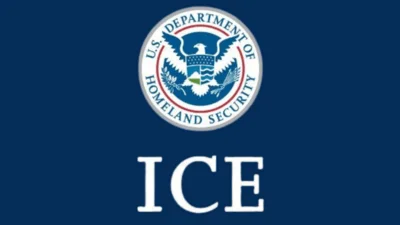WASHINGTON, DC - On Dec. 23, 2011, President Obama signed into law a bill requiring approval of the Keystone XL pipeline within 60 days unless the president determines the pipeline would not serve the national interest. The U.S. House Energy and Commerce Committee today announced a new Keystone XL clock to track how much time has passed since the day the president signed a bill from Congress demanding action on this long-overdue project that will create tens of thousands of jobs and significantly increase America’s energy security. The clock showing President Obama’s Keystone XL delay can be viewed online, along with additional information on the project, here.
“The clock is now ticking, and soon, President Obama must finally make a decision on the long-awaited Keystone XL pipeline. After waiting more than three years for this pipeline while the country faces prolonged unemployment, the American people are fed up with the president’s inaction on a project that can quickly create jobs. The president is now required by law to approve the project unless he believes it is not in the national interest, and with millions of Americans still out of work this New Year, our national interest would clearly be well served when the president says yes to tens of thousands of new shovel-ready jobs. Republicans and Democrats alike agree this is a win-win for America," said Energy and Commerce Committee Chairman Fred Upton (R-MI).
“In 2011 the State Department told us multiple times we would have a decision by December 31st. Why are we still waiting for the creation of thousands of jobs?" asked Rep. Lee Terry (R-NE), a leading advocate for the pipeline and author of the House-passed North American-Made Energy Security Act.
Keystone XL Review Timeline
Sept. 19, 2008 - TransCanada submits an application to the U.S. Department of State to construct the Keystone XL pipeline, an extension of the existing Keystone pipeline.
2009 - Department of State conducts 20 scoping meetings in communities along the pipeline route and consults with federal and state agencies and Indian tribes.
April 16, 2010 - Department of State issues its Draft Environmental Impact Statement. It opens a 45-day comment period, which it extends for additional days.
Summer 2010 - Department of State hosts 21 public comment meetings in communities along the pipeline route. When the public comment period is extended, additional meetings are held. Nearly 1,800 verbal and written comments are received.
Oct. 15, 2010 - Speaking to the Commonwealth Club of San Francisco, Secretary of State Hillary Clinton is asked about approval of the Keystone XL pipeline and she says, “we are inclined to do so."
Oct. 25, 2010 - the General Presidents of four international unions representing a total of 2.6 million workers send a letter to Secretary of State Hillary Clinton urging the Department of State to approve the Keystone XL pipeline project.
December 7, 2010 - Department of State hosts a government-to-government meeting for Indian tribes and other consulting parties.
January 2011 - TransCanada agrees to adopt 57 project-specific special conditions for design, construction, and operations of the Keystone XL pipeline. The conditions are developed by the Department of State and the Pipeline and Hazardous Materials Safety Administration; according to the Supplemental Environmental Impact Statement, these conditions would give the Keystone XL pipeline “a degree of safety over any other typically constructed domestic oil pipeline," making it a truly state-of-the-art pipeline.
April 15, 2011 - Department of State issues a Supplemental Draft Environmental Impact Statement and opens another 45-day comment period. More than 280,000 comments are received.
July 25, 2011 - The Obama administration issues a Statement of Administration Policy calling legislation related to the Keystone XL pipeline unnecessary saying, “the Department of State has been working diligently to complete the permit decision process for the Keystone XL pipeline and has publicly committed to reaching a decision before Dec. 31, 2011."
July 26, 2011 - U.S. House of Representatives approves H.R. 1938, the North American-Made Energy Security Act. The bill, authored by Rep. Lee Terry (R-NE), requires a decision on the Keystone XL pipeline by Nov. 1, 2011. The bill is approved with a strong bipartisan vote of 279-147.
Aug. 26, 2011 - Department of State issues its Final Environmental Impact Statement and opens up a 90-day review period. The agency continues accepting public comments.
Fall 2011 - Department of State hosts public meetings in states along the pipeline route.
Nov. 10, 2011 - President Obama announces that no decision on the Keystone XL pipeline will be made until after the 2012 election. A decision is expected in early 2013, after the administration identifies a new route for the pipeline.
Nov. 10, 2011 - The president’s decision is widely attributed to political pressure exerted by environmentalist groups opposed to the pipeline. A statement from Terry O’Sullivan, General President of the Laborers’ International Union of North America, sums up the response: “Environmentalists formed a circle around the White House and within days the Obama Administration chose to inflict a potentially fatal delay to a project that is not just a pipeline, but is a lifeline for thousands of desperate working men and women. The Administration chose to support environmentalists over jobs - job-killers win, American workers lose."
Dec. 23, 2011 - Both the House and Senate unanimously approve - and President Obama signs into law - a bill requiring approval of the Keystone XL pipeline within 60 days unless the president determines the project does not serve the national interest.





